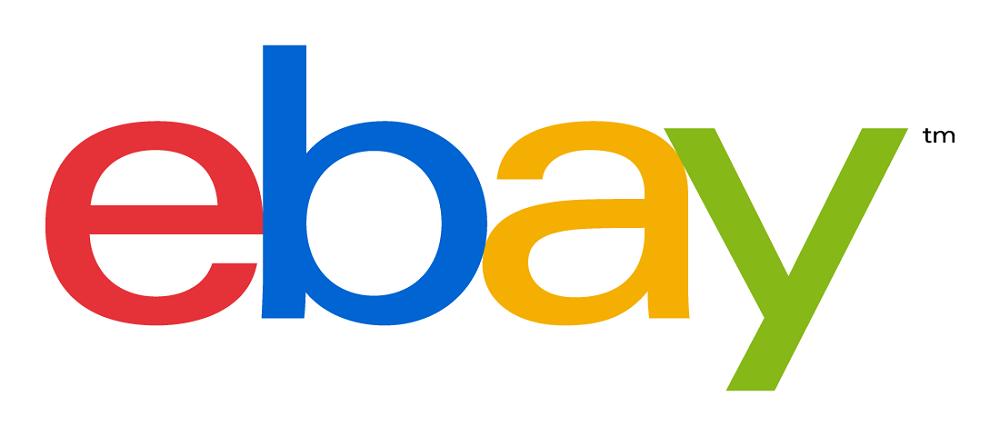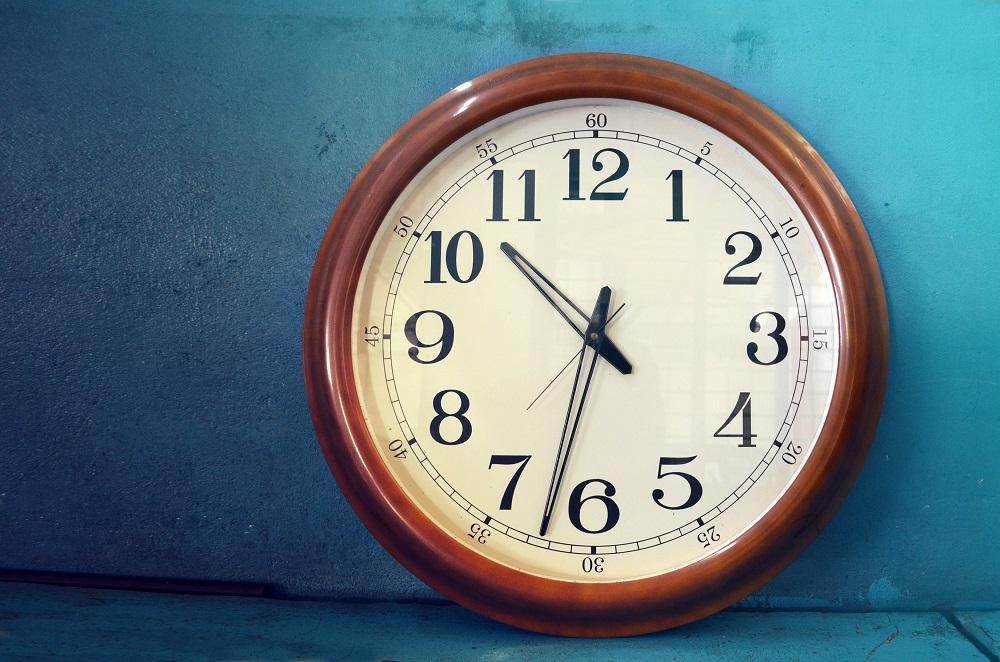




Ebay is the world’s largest online auction site.
People from all over the world are using it each and every day to sell everything from skateboards to socks.
Using eBay to sell unwanted bits and pieces is a great way to clear up the clutter as well as to make some extra cash on the side.
If you’re new to eBay selling we’ve created this 10-step guide for you to ease your way into the wonderful world of making money on this way.
We always love to hear from you, so if you want to share any ingenious moneymaking ideas you’ve discovered, let us know on our Facebook and Twitter pages.
Whether you’re buying or selling, the first thing you’ll need to do is register with eBay.
You’ll need to pick a user ID to sign in each time, so make sure you pick a memorable one.
Once you’ve registered you then need to create a seller’s account. To do this click on the tab in the top right corner labelled sell and fill in the information required.
You’ll be asked to enter your credit or debit card details here – but don’t worry as it’s just for verification purposes, so you won’t be charged. Initially it’s free to register – but you will have to pay fees for your listings when you start selling.
The website is largely operated on a basis of goodwill and honesty and buyers and sellers are held to performance standards. Your sincerity as a seller is boosted by a user feedback system.
Every time you finish a transaction with a buyer or seller, you have to rate the experience and the score becomes attached to that users profile, and vice versa.
If you’re a new seller with little or no feedback buyers might be reluctant to make purchases from you. So before you start listing items, you might want to make a few small purchases to accumulate positive feedback, and to get used to the eBay process.
Ebay have a good range of helpful articles to help you get set-up your seller’s profile. Take a look at these ones to get you started.
• Seller’s checklist – A step by step guide to what information you will need to set up a profile
• Seller tips – Recommendations designed to help you get the most money for your items and sell them quickly
• Knowing the rules for sellers - Before listing your item, make sure you read and understand the rules for sellers
eBay is the perfect place to put your possessions up for sale, just make sure they’re in a fairly good condition because if they’re broken or useless you’re unlikely to sell them.
• If something is beyond repair –think about selling its parts. They could be useful to someone
• DVDs and video games are two of the most popular items sold on eBay. Cult movies and nostalgic games from the 80s or 90s are usually in demand, as well as special editions and unique copies. Find out other ways to make money from your old DVD’s here.
• Unwanted furniture – Instead of throwing it away, see how much you can get for it online. Remember that with bulky stuff it’s probably best to offer it as ‘collection in person’.
• Handmade/Homemade bits and bobs – people love something unique, and personal so why not make homemade cards, purses, phone cases etc. – get crafty! You can also consider selling these on Etsy.com.
• Clothes or shoes – Vintage sells best of course, but cheap clothes, shoes or bags are very popular on ebay
• Toys from your childhood or old magazines may be worth a lot to a collector – if you’re not sure check to see if there are similar items already listed.
• Computer, camera and video cables for machines you don’t have any more can be useful to others – the same goes for manuals you don’t need
• Nothing is too big! Just because something seems too large to ship, it doesn’t mean you can’t sell it on eBay, as you can use the ‘collection in person’ option and find a mutually convenient time for it to be picked up.
Remember, one man’s junk is another man’s treasure so even if you think some of the things you’ve got lying around are useless, think again!
It might sound like the easiest part, but there are a few considerations to be made before you start selling.
After you’re registered as a seller you need to take a look around to see what’s already on eBay to get a feel for how people are selling their products and how much for.
Before you start selling, it’s a good idea to do some research, especially about setting a starting price, listing format, and category. If you’ve got something to sell, see how much other people are selling it for by searching eBay. This will help you create a good listing and get the best price for your item.

Click on the advanced button next to the search bar, tick the box that says completed listings and search for the item you want to sell. This will provide you with a list of auctions that have closed in the last 15 days, it will give you an idea of what kind of price you can expect to sell for, and show you which category to put your item in.
When you’re checking out the similar listings you’ll also be able to get an idea of:
• What kind of description gets the best results (long, short, bullet points…)
• What information you should provide
• Whether to put it up as a standard auction or buy it now format
• Whether to have the starting price low or high –starting low will often result in a high final price.
10 ways to make quick cash today – take a look here.
The item details are super important. No one’s going to buy your items if they can’t find them, and giving eBay all the information you can will help your stuff show up in searches.
Here are three tips to writing a good listing

1. Select the right category - Your selection of category is important to help buyers find your items so ensure you select the category that best describes your item. If you don’t choose the category that is most relevant for your item, ebay can change it.
2. Next, you can select a formatDo you want to put your item up for auction or do you want to set a fixed price? Selecting the best selling format for your item is key to having the greatest success with your sale.
Click here for a comparison chart that shows you the differences in selling formats.
3. Description - Finally, get the company that made the item you’re selling to do the work for you. Massproduced items like mobile phones, instruments, tools usually carry a product description and specification on the manufacturer’s website.
For an extra fee, you can list your item in 2 categories to maximise your item’s visibility. If you list in more than one category, you’ve got a bigger chance of exposure which should make it worth the small fee you’ll have to pay.
Click here for more information on how to select the best category for your item.
A little bit of copying and pasting with a few adjustments and tweaks will save you loads of time and effort, and give buyers all the information they need. However, never copy descriptions or pictures wholesale, as this infringes other sellers’ copyright.
Adding pictures to your listing helps you increase sales, gives your buyers a more accurate idea of what to expect and differentiates your listing from others of its kind.
You can add 1 picture for free with each listing and then you have the options to add up to 11 more pictures per listing for a fee. Putting up more than one photo can work wonders on your final sale price. To find out exact costs click here.
As well as taking photos of all the good elements about the item you should also take pictures of any flaws so that the buyer can work out whether it’s worth their while bidding on it. Having several clear photographs is also a good way of protecting yourself if a buyer claims the item was misrepresented.
You can upload photos in these file formats: JPEG (.jpg file extension), PNG (.png file extension), TIFF (.tif file extension), BMP (.bmp file extension) and GIF (.gif file extension).
Use a good camera to take photos for your listing. Think about whether your item needs more than one angle – take photos of the front, back, the size, the label, the hallmarks, the print etc. this way people really know what they are buying. Doing this will increase your chances of people bidding.
It can also be worthwhile videoing the item, if it’s really good and you want to sell it for top price. Take a video on your phone, upload it to Youtube and put a link to the video in the description. Find out how to make money from your photos here.

Before you sell and make any money you need to work out exactly how much an item is worth and how much it’s going to cost you to sell it. After all, you want and need to make a decent profit from every item you sell. You’re going to need to consider what kind of listing you want as different listings incur different fees.
The first fee that anyone selling on eBay has to pay is an insertion fee. This is what you pay for listing your item. The amount depends on the starting price you’ve decided on and the kind of item you’re selling. The best way to check the insertion fee is here, taking into account what kind of item it is (media, clothing, electrical) and the starting price you want to list it at.
If you want extra features you’ll have to pay a little more – like a gallery, or the ‘buy it now’ feature. It seldom costs more than 50p, but check here to get the exact amount. These fees are all payable upfront before your listing goes live.
Last year eBay increased a range of its selling fees. According to Which? Sellers will now have to pay £1 to add a subtitle, 50p to add a ‘buy it now’ option and £2.50 to add ‘gallery plus’ images to items.
The cost of setting a reserve on your item has risen to 4% of the sale price, and you’ll now have to pay 30p to add a custom design to your auction.
Once you know how much the listing will cost you, you have to decide a starting price for your item. If you start under 99p it’s free, and sometimes it’s worth taking a risk and starting at a lower price because it will encourage people to bid on what they think is a bargain.
If you’re happy to start the bidding low, but want to make sure it reaches a certain amount then use a reserve price to protect the item. This means that unless someone exceeds the reserve price the item will not sell and you can list it again.
After your item has sold, you then have to pay a Final Value fee to eBay. Check out the final value fee table here.
Making extra money – do you have to pay more tax? Find out here
It’s important to think about what time you end your sale. According to eBay, the busiest time for buyers is Sunday evenings, so schedule your auctions to end around that time. Avoid times when most people will be busy, such as weekday mornings, or any big events.

Katie Guilding has been an eBay seller for the last 5 years - mainly selling second hand clothes. She recommends having your listed items end on a Sunday too. “For me Sunday tends to be the day I see the most bidding activity.
Perhaps this is due to more people being at home or having the time to browse. Also have your items end between the hours of 7pm and 9pm, as stated above, the highest activity happens between these hours.”
If you have a smart phone it is worth downloading the eBay app - for starters it’s free. It means you can keep an eye of your listings whilst on the go. It also means you will get any notifications when anyone bids on your item or has a question meaning you can respond immediately.
When you get questions about things you are selling reply as soon as you can. If you take days to reply they might of already bought the same item from someone else in that time.

Once you’ve decided on all the above, you’re ready to list your item and start selling. Now all you’ve got to enter all this information on the ‘sell your item’ form.
Next you’ll have to choose a title for your item – take some time to think of what buyers would search for if they wanted to buy your item. Then try to get some keyword into the title. For example, if you’re selling a dress you might want to list the colour, size, make or style.
Spruce up your listing with different fonts, colours and formatting. Don’t go over the top though – as over-complication can be offputting.
Decide the length of your listing – refer back to your research and see whether a longer listing is more profitable than a shorter one. List your item over at least one weekend as people are more likely to search eBay in their leisure time than at work.
Longer auctions will allow more potential buyers to stumble onto your sale, although most bids take place in the last few hours of an auction, so running an auction for more time doesn’t necessarily mean it will make more money.
Once the listing has ended and you’ve got a buyer, you’ll both receive confirmation through your eBay account.
If you’re using PayPal, then you’ll get an email when they’ve paid, and you can post the item soon afterwards.
Never send out an item until you have received payment. If they’re paying by cheque this means waiting until the cheque has cleared and the money is in your account.
Post items ‘Recorded Delivery’ when posting with the Royal Mail. If you send an item on delivery you can track its whereabouts. This prevents any sellers claiming they have not received an item. And if it is lost, you are covered by insurance.
You’ll then get an invoice from eBay for your final value fees. The most convenient way to pay your bills is through PayPal, you can do this by signing up for automatic payments. Your fees will then be deducted from your account no sooner than 15 days after you received an invoice.
Alternatively you can make one-time payments via PayPal, direct debit, credit card, or with a cheque or postal order (although the latter is tedious and more expensive).
Any account balance over £1 requires payment in full each month. If you don’t pay after reminders and warnings, eBay will freeze your account and then send the bailiffs in.
If you don’t sell the item then you won’t have any final value fees to pay and you can relist your item for free (as long as it sells the second time – then you’ll get the second relisting fee refunded).
Once the transaction is complete your buyer will leave feedback that will have an impact on your feedback score, so it’s up to you to make sure it’s all positive.
Buyers will leave you a 1-5 star detailed seller rating on item description, communication, dispatch speed, and fairness of shipping charges.
Remember: if you establish yourself as highly-rated seller, you’ll be all the more likely to attract new customers and ensure loyalty from those who have bought from you in the past.
“After a while you get an idea of what’s worth selling on eBay and what isn’t” says Jasmine Birtles. “If you have lots of time on your hands then it can be worth selling anything, even stuff you only get £2.50 for. But if you’re busy, it can be better to stick just to items that you know will sell for £20 or more and nothing else. Because once you’ve paid all the selling fees and the postage, spent time photographing it, listing it, answering questions about it, wrapping it, getting it to the post and then, perhaps, dealing with issues and complaints from the buyer…really you would be better off selling it at a car boot sale or giving this annoying item to charity!

“So learn by your experiences. If you have the time and the interest then by all means go for it, but if you don’t have all the time in the world, just pick the winners to sell and think again about the small stuff.”
So there it is our 10-step guide to helping you make money on eBay.
For more ideas and advice on how to make money on eBay, take a look at our article for 20 tips for making more money on eBay today here.
For more tips and ideas for making money visit Moneymagpie.com.